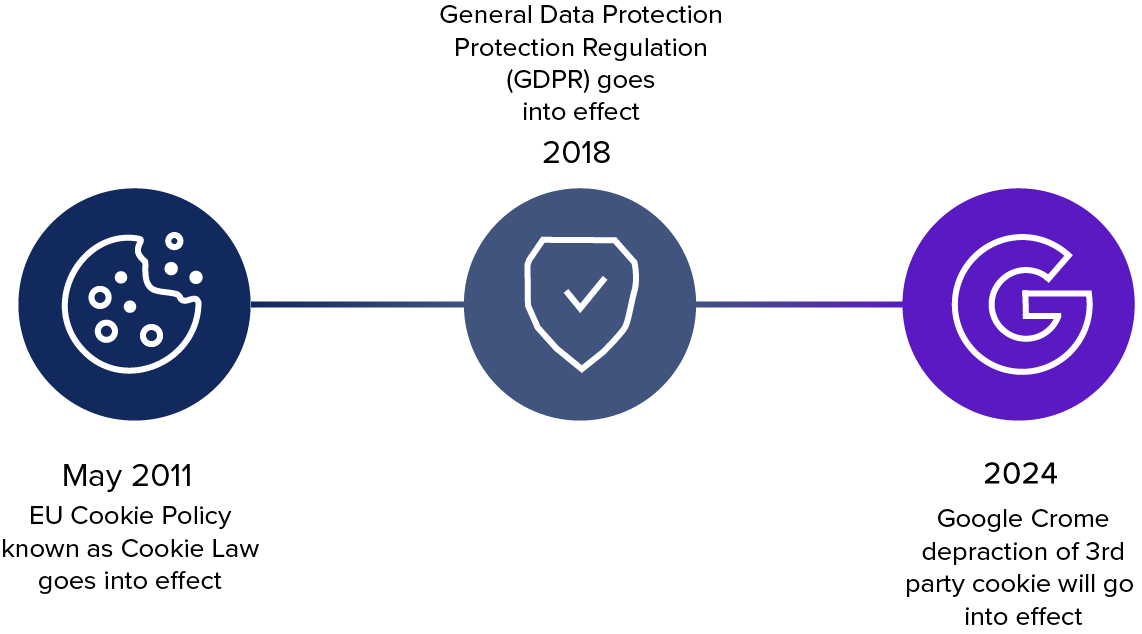The End of Cookies: The Rising Importance of 1st Party Data
Google has announced that it will stop the use of third-party cookies in Chrome by the end of 2024, now is the time to evaluate the way you collect data.
1. The end of the cookies
In January 2020, Google announced its plans to phase out support for third-party cookies in Chrome (accounting for more than 65% of the global internet browser market share) by 2022.
In June 2021, the company initially postponed the shift to 2023 and again a few days ago to 2024, giving companies and publishers more time to adapt. This means that from 2024 onwards all major browsers (Google Chrome, Firefox, Safari) will block the use of third-party cookies.
Third-party cookies are placed by sites other than the one that the user is directly interacting with, most typically when an advertisement is displayed on the page but also through the use of invisible tracking pixels and other means. They are used for sharing user’s information between different sites, retargeting and tracking user behaviour across any site where the third-party server places ads.

Google’s new proposed solution, introduced as part of their “Privacy Sandbox” initiative, is based on what they call the “Federated Learning of Cohorts”: instead of being tracked individually, users will be grouped in cohorts with similar characteristics (accordingly to their browsing history, as collected by the Google Chrome internet browser).
2. The Legal aspect
Since 2018 we have been observing a series of changes that promote the protection of user privacy, when Google decided to stop sharing their user ID, preventing the shaping and activation of one-to-one communications in their suite.
After the publication of the European data protection law (GDPR), there have been changes, not only legislative, but also technological that affect the way we operate in digital marketing. We help our customer to overcome those changes and in advance to prepare their technology stack and processes. These changes are a reflection of the customer's aim to remain their data private and how they perceive brands as good or bad based on the transparency when using their data.
3. New World
Unlike third-party data, first-party data is collected with consent from your customers. This means that your customers are aware of the type of information you’re collecting as well as how it’s being used, so you don’t encounter many of the data privacy issues you might face when trying to use third-party data.
Using a mix of the first-party data-based technologies, it is highly focused on ensuring that it finds an efficient, privacy-safe and scalable way to make these audiences with minimal intervention from intermediaries.
With first-party data, you can achieve higher accuracy and quality. As marketers gather better insights about customers and therefore deliver better experiences for them.
Strategy
- Collect data from owned channels as first-party to mitigate the impact of ad blockers and third-party cookie depreciation
- Enable business users to manage ongoing first-party data collection without putting additional burden on IT when adding new channels or data sources
Prepare and invest in a robust 1st party data solutions:
Step 1: Collect and grow through durable tagging
Step 2: Organize 1st party data - build and organize sustainable data governance
Step 3: Activate using 1st party data – Invest and activate 1st party data



